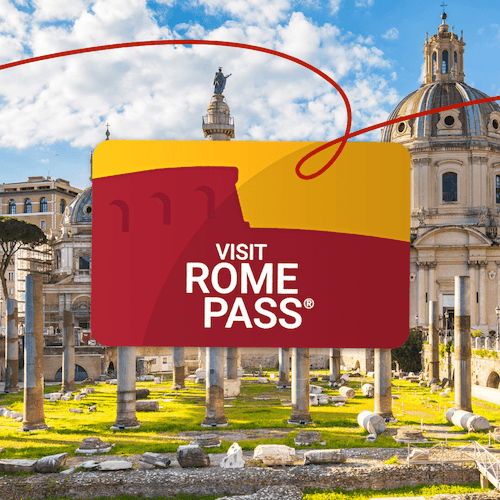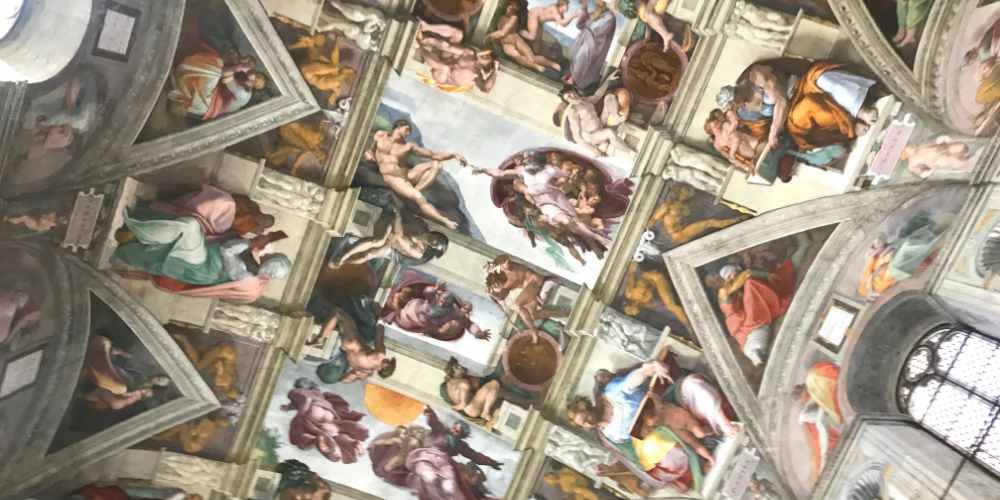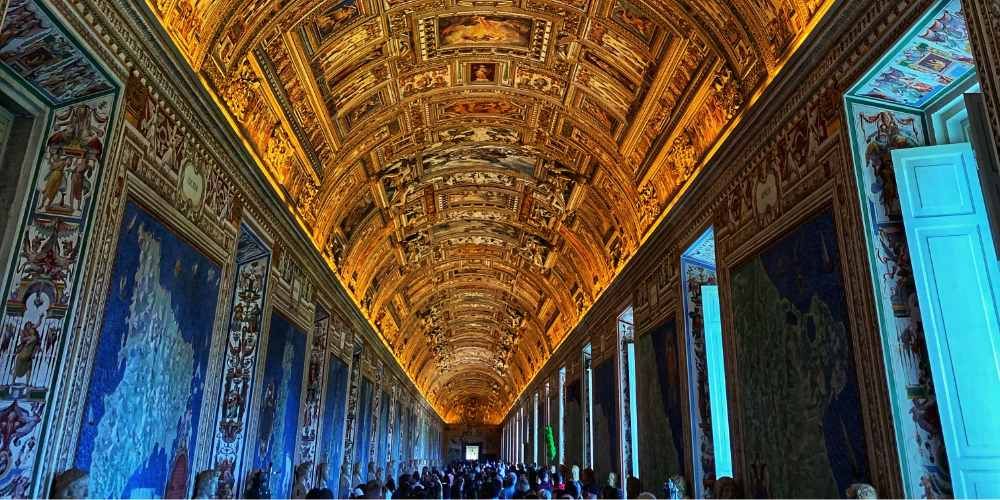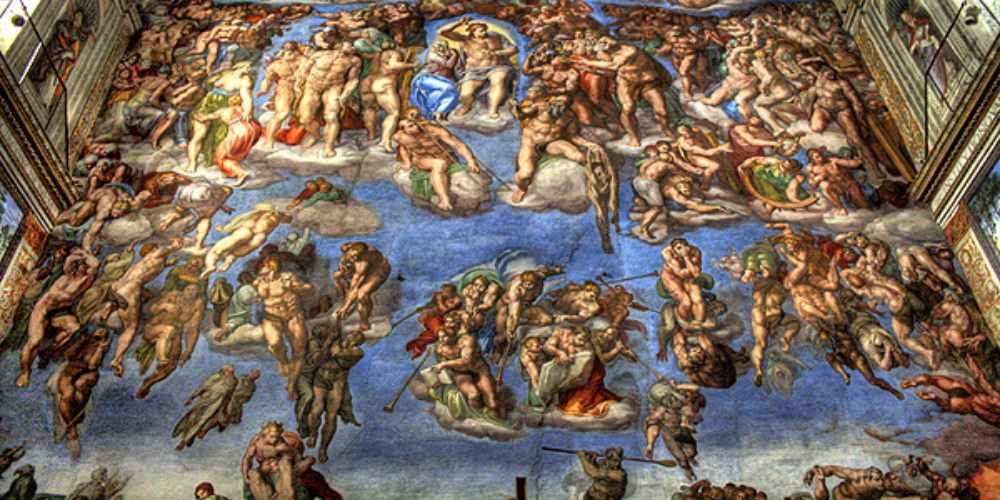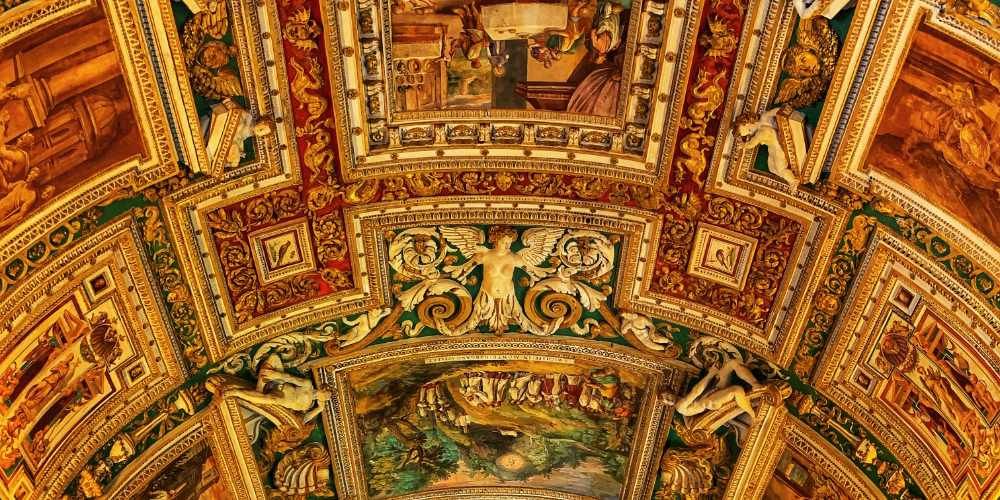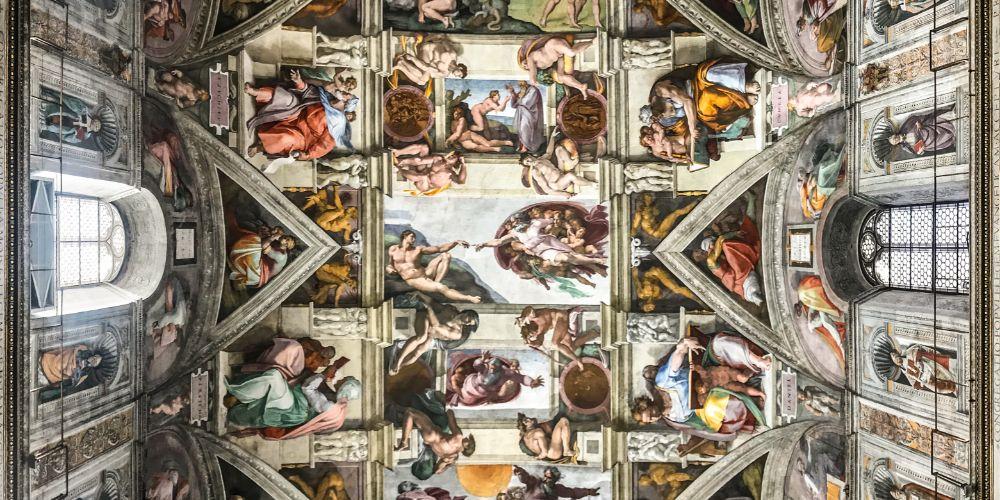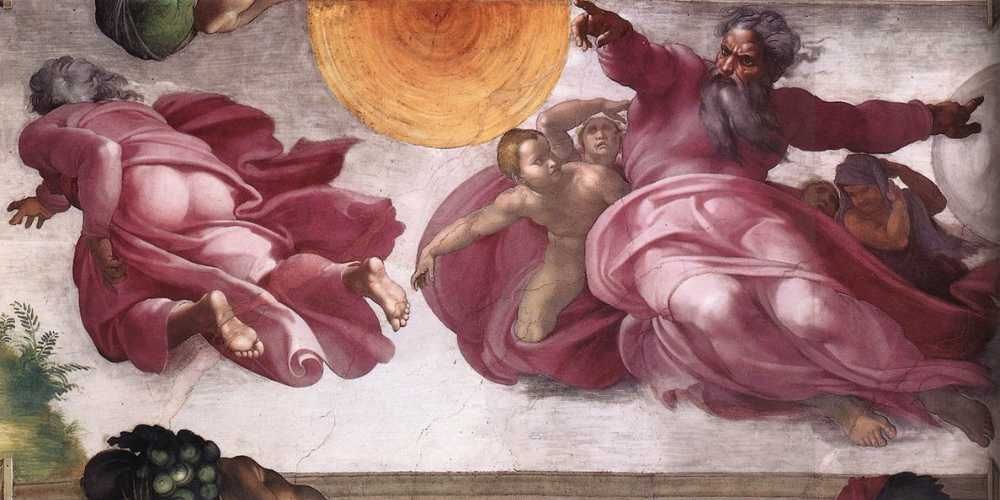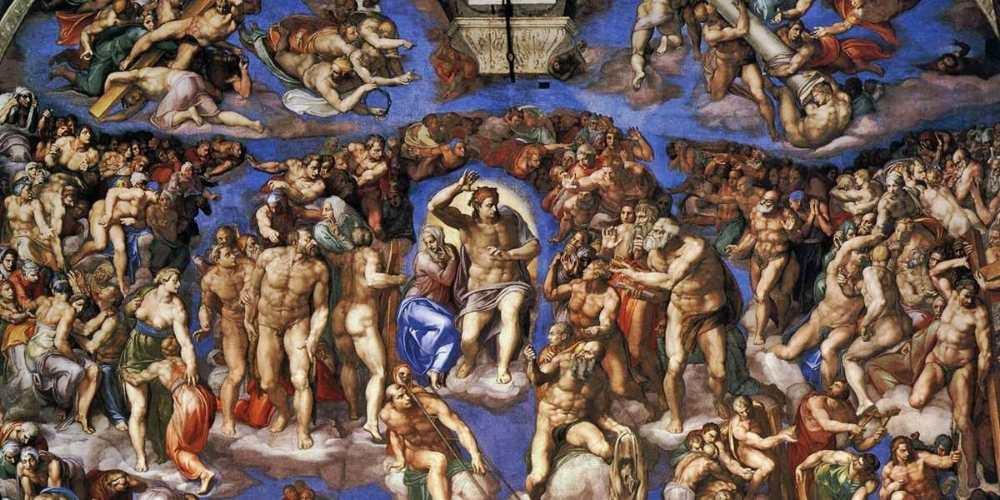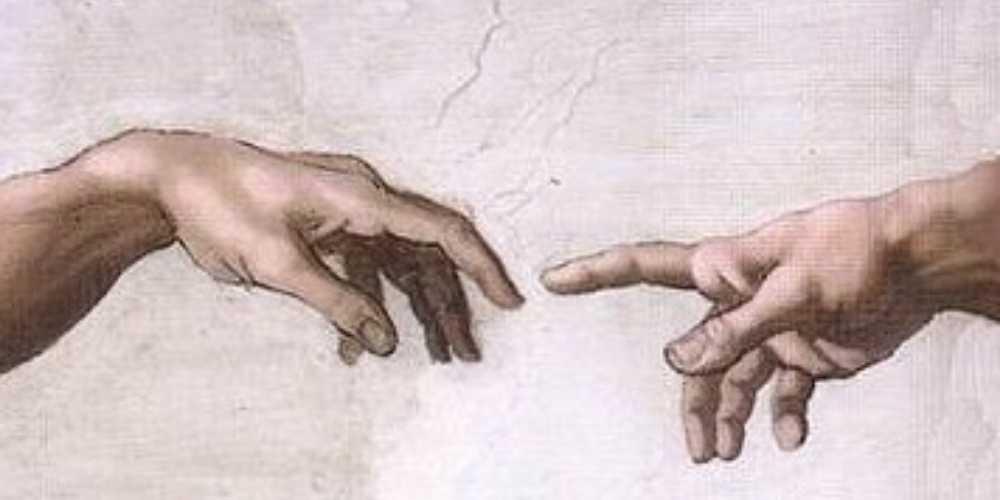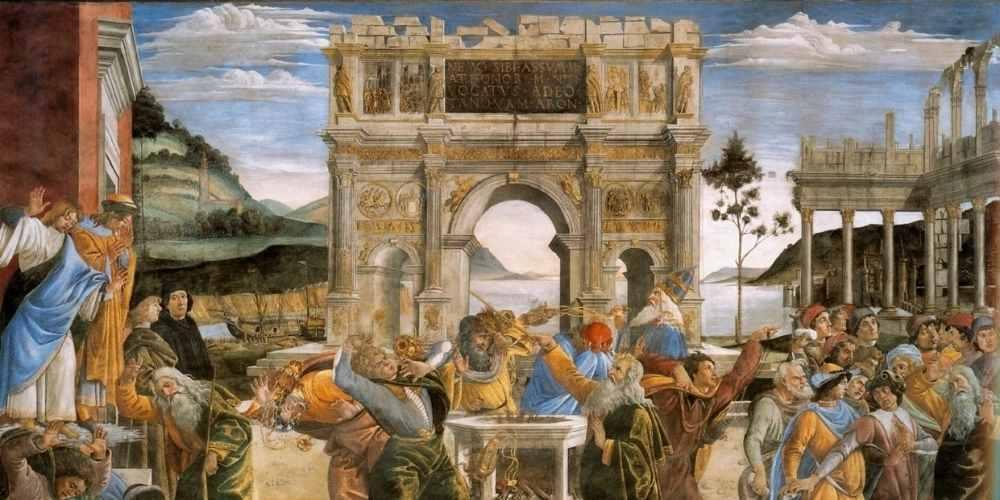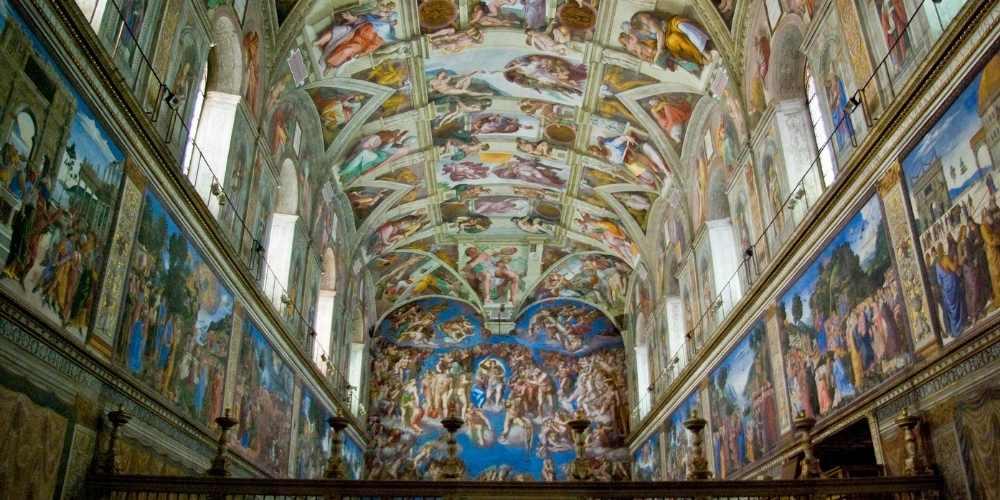No one can truly describe the beauty of the Sistine Chapel in Rome. Let us guide you through its wonders so that you can enjoy your visit at its best!

Visiting the Sistine Chapel is an emotion that can hardly be described: it feels like being in the presence of all the genius of humanity. Indeed, it is estimated that each year more than 6.5 million visitors cross the threshold of the Sistine Chapel.
If you do not organize your visit well, however, instead of enjoying every moment of it, your excitement can turn into a tiring moment of your trip to Rome.
Therefore, in this article, we provide you with a guide with all the useful information and directions on what to see and how to visit it: you will also find specifics on how to book tickets for the Sistine Chapel.
Our tour inside one of the most extraordinary works of humanity can therefore begin.
Buy here your skip the line tickets!❯
The Sistine Chapel in Rome, history of a masterpiece
The history of the Sistine Chapel, whose name is inextricably linked to that of Michelangelo, actually begins well before the creation of his masterpiece.
In fact, the chapel existed as early as the 14th century, and it was not until the late 15th century that work was begun to transform it into what it is today. The reconstruction is asked by Pope Sixtus IV (hence the name Sistine Chapel) and lasts a few years: on August 15, 1483, in fact, it is already possible to celebrate the first mass.
At that time, some of the most fashionable artists in Florence, including Botticelli and Ghirlandaio, were sent to Rome by the Medici family. The decoration of the Chapel could thus have its spectacular beginning.
We have to wait a few more decades to have Michelangelo decorating the Sistine Chapel's ceiling. In fact, it is Pope Julius II that in 1507 decided to entrust Michelangelo with the work. Michelangelo and his collaborators work here for a full four years.
Of course, this is not the end of the story: Pope Leo X decides to enrich the Chapel as well: in fact, he donates a series of tapestries that are woven no less than in Flanders, based on a design by the great Raphael.
And the fresco of the Last Judgment? Well, Michelangelo did it no earlier than in 1536.
Visiting the Sistine Chapel: the beautiful frescoes
The Chapel has the distinction of having a length and width equal to those of Solomon's Temple in Jerusalem (at least according to Old Testament records): 40.93 meters long by 13.41 meters wide.
The structure is then covered by a lowered barrel vault and a height of 20.70 meters.
Numerous little windows on the side walls give brightness to the room (6 on each side). The pictorial decoration then follows the conformation of the Chapel and its windows.
There are 3 orders of decoration.
• The lower one is occupied by tapestries made according to Raphael's design;
• In the second order, in the middle, there are the Stories of Moses and Aaron on the left side and instead the Stories of Jesus on the right side;
• The upper part, where the windows are placed, is in turn divided into two sub-orders: the first pontiffs (starting with Peter) and the little parts frescoed by Michelangelo.
The works and frescoes inside the Sistine Chapel represent the painted history of all humanity, starting from Creation to the end of time, the Last Judgment.
With the Roma Tourist Card, you can benefit from exclusive discounts on fares and customise your itinerary to discover the capital's attractions.
You can also download a precious audio guide that will help you to explore the secrets of 130 places in this magnificent city.
The Last Judgement
Michelangelo's Last Judgment is located on the western wall, where the altar of the Sistine Chapel is located.
This work continues to enchant visitors from all parts of the world and represents a milestone in art history. Indeed, while philosophy at that time was steeped in optimism about Man and his reasoning, in this work, on the other hand, all the despondency, chaos and uncertainty that dominates human life emerges.
Moreover, even before it was completed in 1541, this work raised boundless admiration but also countless criticisms. For a time, criticism of the nudity of the figures prevailed and it was even decided to cover the subjects involved. The work of removing these "covers" did not take place until the 1994 restoration.

The Ceiling by Michelangelo
In addition to the Last Judgment, visitors' eyes cannot fail to linger on the ceiling of the Sistine Chapel.
In just four years, despite immense difficulties, Michelangelo managed to paint one of the most famous fresco cycles in art history, and almost entirely by himself.
The subject matter of these frescoes complements that of the walls and tells the story of man before the delivery of the tablets of Moses.
Indeed, 9 stories from the Book of Genesis and scenes from the Book of Kings can be seen. There are also scenes here that tell the genealogy of Jesus.
For Goethe, the beauty of this place is so immense that unless one sees it, "one can form no appreciable idea of what one man is capable of achieving".
Where the Sistine Chapel is located
Entering to visit the magnificent vault of the Sistine Chapel means purchasing admission to the entire Vatican Museums.
In fact, the tour of the Museums culminates precisely with access to the interior of the Chapel.
Here your gaze will be enraptured by the magnificence of all that surrounds you and, above all, by all that towers above you. Indeed, the excitement is such that time inside the Chapel seems to pass in the blink of an eye.
This is another reason why it is a good idea to organize your visit as best you can and, above all, to purchase tickets in advance.
Among the wide range of solutions you have at your disposal to reach the magnificent Sistine Chapel, you might consider an efficient and practical car rental service.
Thanks to it, you can get nearby the famous Vatican Museums, a treasure chest of marvelous pictorial masterpieces dating back to the enchanting historical epoch of the Italian Renaissance.
Sistine Chapel tickets: how much they cost and how to book them
Tickets for the Sistine Chapel include a visit to the Vatican Museums. In fact, it is not possible to split the visit to the two attractions, and the Sistine Chapel concludes the visit to the Museums.
The Museum is open Monday through Friday from 9 AM to 6 PM (last admission at 4 p.m.); on the last Sunday of the month, it is open with free admission from 9 AM to 2 PM (in the latter case, it is not possible to book admission, only the guided tour).
To gain access from Monday to Saturday to the Sistine Chapel, by all means, we suggest you book your tickets in advance. As this is in fact one of the most visited places in the world, tickets for the Sistine Chapel sell out very quickly.
The cost is 22 euros per person, to which the audio guide can be added if desired. There is also the option of purchasing the standard ticket (without pre-sale fee) at a cost of 17 euros, but in addition to the fact that they are not always available, the waiting time at the ticket office gets indefinitely longer.
Therefore, we definitely suggest buying skip-the-line tickets to the Sistine Chapel online and in advance!
Get here your skip the line tickets!❯How to get to the Sistine Chapel: all the alternatives you have
The entrance to the Vatican Museums is located at Viale Vaticano 6: getting there, as we shall see, is rather simple. In fact, the main difficulty is juggling the large lines of visitors who, especially at particular times of the year, crowd the entrances.
With our suggestions, however, you will see that your visit to the Sistine Chapel will be much easier and you will be able to fully enjoy the experience.
You can take an exciting tour through several sights and tourist attractions of Rome with the support of the innovative audio-guide app.
How to get here by plane: the closest airports
There are two major airports: Fiumicino, the international airport, and Ciampino Airport.
In both cases, these are airports well connected to the city center by an efficient train and bus system.
Using public transportation, the most convenient thing to do is undoubtedly to get to Rome's Termini Station and from there move by public transportation, which we will see in a moment.
Ciampino is connected to Termini by the bus routes of several companies: Sit Bus Shuttle, Terravision and Atral, whose tickets cost between 4 and 6 euros per person each way. You just need to consider that although it is only 13 km away, traffic in Rome can often be merciless and travel times often lengthen.
Fiumicino, however, is also connected to Termini by Trenitalia trains, as the train station is right inside the airport. It takes about 30 minutes for the entire journey at a cost of 14 euros per person one way.
Alternatively, at a lower cost, it is possible to use the buses of the Sit Bus Shuttle, Atral, Cotral, T.A.M. and Terravision lines at a cost starting at about 5/6 euros per person (the inconvenience is still traffic).
If you want to visit Rome's splendid attractions while optimising your time, don't miss the pass, which gives you access to 3, 5, or 7 of the many places of interest that sprinkle this incredible city.
Once you get there, how do you proceed? Let's see in the next section.
How to get to the Chapel from Termini train station
You can reach the Chapel by metro, which is the most often recommended choice. In fact, you simply hop on the Metro A (to Battistini) and get off at the Ottaviano stop, which is a 5-minute walk from the entrance to the Museums. You have to calculate about 30 minutes in total.
Alternatively, you can reach the Vatican by going by train. In about 25 minutes, in fact, you can arrive at the Roma San Pietro station. From here, however, the route to the entrance of the Museums is about 2 km: it can be convenient, however, in case you decide to visit Piazza San Pietro first and then head to the Museums.
From Termini, however, it is also possible to get to the Museums by bus. The line to choose is 64 and the reference stop is Piazza Pia, next to Castel Sant'Angelo (about 1.5 km from the entrance to the Museums).
For art history enthusiasts eager to admire the spectacular cycle of frescoes by Michelangelo, one of the great artists of our Renaissance, and the splendid collection of sculptures from the Roman age, Visit Italy offers a combined option.
With a single ticket, you can enjoy skip-the-line entry to the Vatican Museums and the famous Sistine Chapel and enjoy the view of the city from an original perspective by traveling on board a Hop-on Hop-off bus with the support of a knowledgeable audio guide.
What if we get to Tiburtina? Let's see the best solutions now.
How to get to the Chapel from Tiburtina train station
Tiburtina Station is located diametrically opposite the Vatican Museums.
The most convenient solution is to reach Roma Termini Station and from there leave for the Museums by the methods reported earlier.
Alternatively, one can take bus 490, which connects Tiburtina to the Candia/Mocenigo stop, 200 meters from the entrance to the Museums, in about an hour's journey.
Once you arrive at your destination, you may benefit from early entry by participating in an exclusive and exciting tour, which will take you to discover the wonders of the Vatican Museums and the Sistine Chapel more privately and intimately.
How to get there from Rome city center
If you are in the center of Rome but not in the Tiburtina or Termini area, here is a compendium of public transportation lines that allow you to go to visit the Vatican Museums.
- Metro: line A with stops at Ottaviano-Musei Vaticani and Cipro;
- Tram/Streetcar: 19 with a stop in Piazza Risorgimento;
- Bus: choose line 49 with a stop facing the entrance to the Museums. Alternatively, 32, 81, 982 stopping at Piazza Risorgimento and, finally, 492 and 990 stopping at Via Leone IV.
You can take part in an exciting guided tour of the Vatican Museums, the Sistine Chapel, and the Colosseum with the ticket reserved for loyal readers of Visit Italy articles and columns.
How to reach the Sistine Chapel by car
Reading this article, it will probably be clear by now that getting to the Museums by car is perhaps not the most convenient option.
There are several parking lots and garages where you can leave your vehicle, but it is often not so easy to find availability.
Anyway: the area where the Museums are located is a traffic-restricted zone, so not all categories of vehicles are allowed to move. For more information, it is advisable to consult the official Mobility Rome website.
How to visit the Sistine Chapel: final info and advice
One of the most exciting experiences in life is undoubtedly the entrance inside the Sistine Chapel. Your heart beats wildly and your eyes don't quite know where to look. Beauty is literally everywhere.
In order to rejoice in this moment of visiting, we give you some of our suggestions and useful tips:
- First, buy your tickets in advance. Be sure to buy skip-the-line tickets, such as these, otherwise you may have to wait several hours before you see the entrance to the Museums.
- While visiting inside the Sistine Chapel, remember that photography is not allowed. Since the time inside the Chapel is not very long, you might want to put your phone in your pocket and let your eyes take the most indelible photographs of your life.
- Even though it is one of the most famous places in the world, it is still a sacred place. For this reason, only those who are dressed appropriately will be granted entry.
- For your visit to the Sistine Chapel, do not bring backpacks or bulky bags because you will have to leave them in the lockers at the entrance. Also remember not to bring any sharp, pointed objects, just like when you check in at the airport!
Beyond these simple rules, a visit to the Sistine Chapel is an experience of such emotional impact that we can only wish you to experience it (or relive it) as soon as possible.
If you would like to enrich it with a guided tour click below!
Book your guided tour!❯


